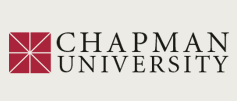Date of Award
Spring 5-2023
Document Type
Thesis
Degree Name
Master of Science (MS)
Department
Food Science
First Advisor
Rosalee Hellberg, Ph.D
Second Advisor
Fredric Caporaso, Ph.D
Third Advisor
Anuradha Prakash, Ph.D
Abstract
Meat analogs are becoming increasingly popular for health, environmental, and ethical reasons. However, these products are at risk for contamination with Salmonella enterica. Therefore, it is important to ensure that detection methods for S. enterica in meat analog products are effective. Currently, the Bacteriological Analytical Manual (BAM) chapter on Salmonella detection calls for pre-enrichment of meat analogs using lactose broth (LB) with added surfactants, Tergitol Anionic 7 or Triton X-100. However, it remains to be determined whether surfactants are necessary for pre-enrichment of meat analogs. Following pre-enrichment, screening with VIDAS is typically performed. While VIDAS is an effective screening method, it requires costly equipment that is not universally found in laboratories and is time-consuming. Potential alternatives to VIDAS are real-time PCR or loop-mediated isothermal amplification (LAMP). The objective of this study was to optimize the procedures for pre-enrichment and screening of meat analogs for the detection of Salmonella. This was accomplished by inoculating meat analog samples with Salmonella at three different inoculum levels, then pre-enriching these samples with either LB-T, LB, or BPW. These samples underwent screening with VIDAS, LAMP, and qPCR. All samples also underwent culture-based confirmation testing. The results for the screening methods in this study showed an overall higher positivity rate with LAMP and VIDAS compared to qPCR. Pre-enrichment with BPW resulted in the highest positivity rates for both culture-based confirmation and screening. Surfactants were determined to not be necessary for detection of Salmonella in meat analog and pre-enrichment using a surfactant resulted in the vii lowest overall positivity results. The results of this study support the change of the FDA reference method of LB-T with VIDAS, to BPW with either LAMP, VIDAS, or qPCR.
Creative Commons License

This work is licensed under a Creative Commons Attribution-Noncommercial-No Derivative Works 4.0 License.
Recommended Citation
Tabb, A.M. (2023). Single-laboratory validation for the detection of Salmonella enterica in meat analog products. Master's thesis, Chapman University. https://doi.org/10.36837/chapman.000461
